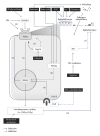Update in pathogenesis and prospective in treatment of necrotizing enterocolitis
- PMID: 25147804
- PMCID: PMC4124648
- DOI: 10.1155/2014/543765
Update in pathogenesis and prospective in treatment of necrotizing enterocolitis
Abstract
Necrotizing enterocolitis (NEC) is among the most common and devastating diseases in neonates and, despite the significant advances in neonatal clinical and basic science investigations, its etiology is largely understood, specific treatment strategies are lacking, and morbidity and mortality remain high. Improvements in the understanding of pathogenesis of NEC may have therapeutic consequences. Pharmacologic inhibition of toll-like receptor signaling, the use of novel nutritional strategies, and microflora modulation may represent novel promising approaches to the prevention and treatment of NEC. This review, starting from the recent acquisitions in the pathogenic mechanisms of NEC, focuses on current and possible therapeutic perspectives.
Figures


References
-
- Hintz SR, Kendrick DE, Stoll BJ, et al. Neurodevelopmental and growth outcomes of extremely low birth weight infants after necrotizing enterocolitis. Pediatrics. 2005;115(3):696–703. - PubMed
-
- Bedrick AD. Necrotizing enterocolitis: neurodevelopmental “Risky Business”. Journal of Perinatology. 2004;24(9):531–533. - PubMed
-
- Fitzgibbons SC, Ching Y, Yu D, et al. Mortality of necrotizing enterocolitis expressed by birth weight categories. Journal of Pediatric Surgery. 2009;44(6):1072–1076. - PubMed
Publication types
MeSH terms
Substances
LinkOut - more resources
Full Text Sources
Other Literature Sources
Medical

